What to do and see in Quito, Ecuador
Atualizado em:
Since December 2018 Gol, a low-cost Brazilian airline, is providing direct flights to Ecuador- the right destination for those seeking history, culture and natural wonders. So, here are some tips for those who want to visit the country and are planning for their trip to Quito, the capital of Ecuador.
Quito is one of the most beautiful capitals I’ve ever set foot on. I would personally rank the historic center of Ecuador’s capital among the three most beautiful in South America. The Spanish colonial influence is a source of great pride in buildings dating back to the 18th century. Certified as a World Heritage Site by UNESCO since 1978, the charming architectural ensemble blends baroque lines of Jesuit churches and monasteries with a Moorish Andalusian feel. Truly a sight.
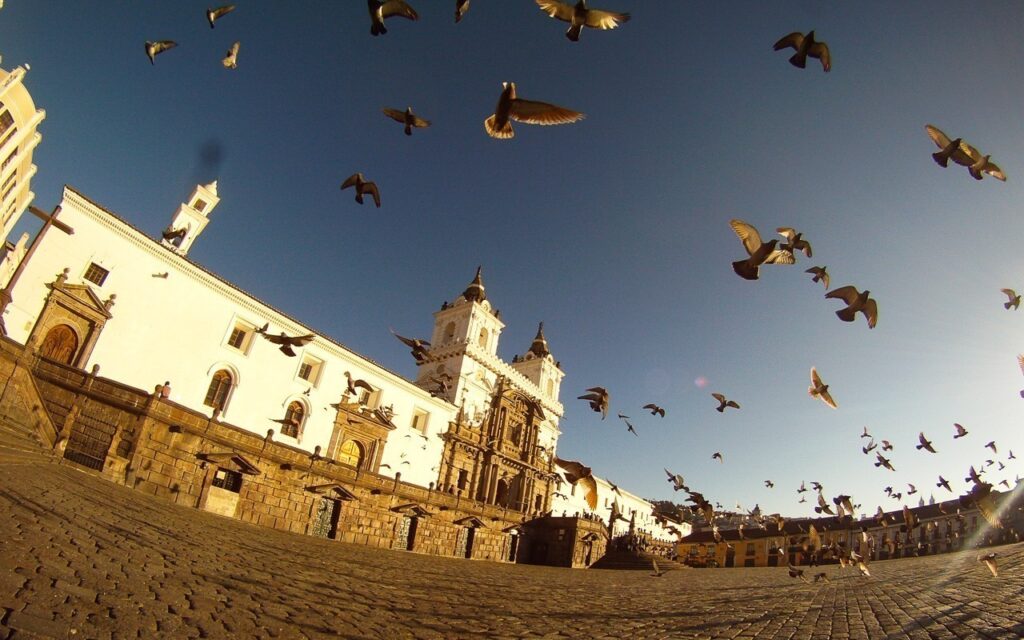
Quito’s center displays centuries-old colonial houses, dating from the 16th and 17th centuries.
In Ecuador, just like in Peru, Bolívia, and Colombia, an authentic Andean spirit takes place. Besides being on the way to the unparalleled Galápagos Islands, Quito is the starting point for discovering the famous Avenue of the Volcanoes and also for the still-mysterious Ecuadorian Amazon. Another special attraction nearby is the famous imaginary line that divides the planet into two hemispheres. There is a whole universe to be discovered from Quito.
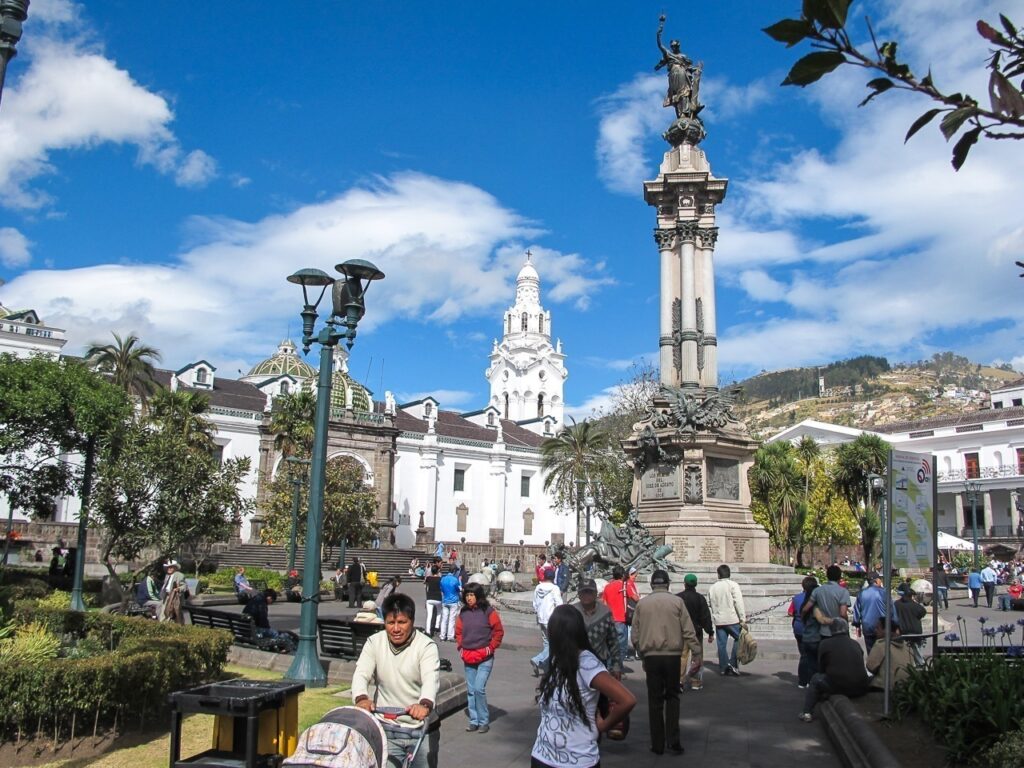
Plaza Grande concentrates the El Palacio de Gobierno and the Cathedral
What to do in Quito’s historic center?
With a total of 10 squares, Quito’s historic center is the starting point for understanding why this city is so special. By the way, there are more than 40 churches in a short stretch of just a few blocks. The city brings together more than 4,000 historic listed buildings. I highly recommend walking at dawn, as I did when I was there. Besides being more empty and great for photographing the almost-deserted streets, the light is wonderful and shines in a way that highlights all the buildings.
Start at Plaza Grande, where the Palacio de Gobierno (Governor’s Palace) is located. From there, president Lenin Moreno commands the country. When I went there only two policemen were stationed and it didn’t even look like the most important government building. Every day at 9 am there’s a free guided tour. Right next door, the cathedral is really pretty but it wouldn’t fit into my personal ranking of the most beautiful churches in town. On the other side of the street is the luxurious Plaza Grande Hotel, which welcomes most heads of state visiting Ecuador.
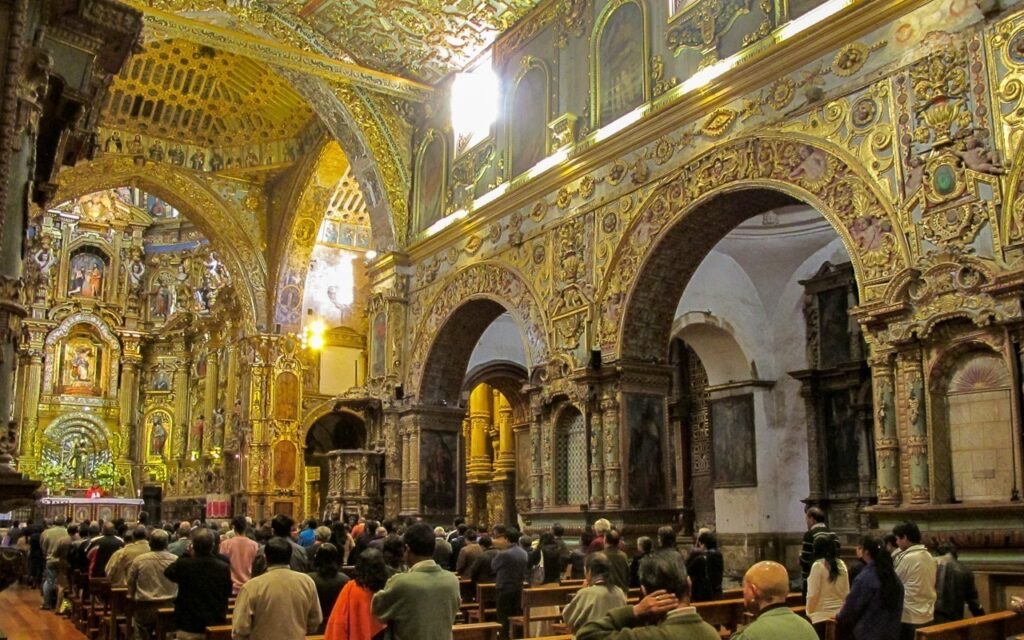
San Francisco Church, dating from 1534 and complete with gold.
Important tip, walk slowly and take a water bottle with you, after all we’re 2,850 meters high.
It’s normal to feel breathlessness and discomfort, and the entire adaptation process depends on being well hydrated and having a good night’s sleep, much more than the coca leaf tea (which yes, always helps). Save your breath as you’ll need it when you arrive at Plaza San Francisco.
A flock of pigeons made everything even more photogenic (first photo of this post). The highlight is the San Francisco Monastery, with a beautiful church from 1534 where daily masses are held at 7 am. There’s a line of unemployed people waiting for coffee and some people throwing corn to the pigeons, everything is very scenic. The Franciscan Museum, right next door, houses a precious collection of sacred art.

The towers of the Basilica del Voto Nacional stand out in the landscape.
On the other side, Casa Gangotena is a very elegant boutique hotel where you can dine with an impressive view of the square. It’s expensive, but it’s also worth it for its elaborate creations.
The Companhia de Jesus Church is simply stunning. I’ve never seen so much gold in my life. Unfortunately, photos are forbidden inside and the best way to get in without paying is during masses. From various corners, you can see the Pichincha Volcano, sometimes with a bit of smoke on top.
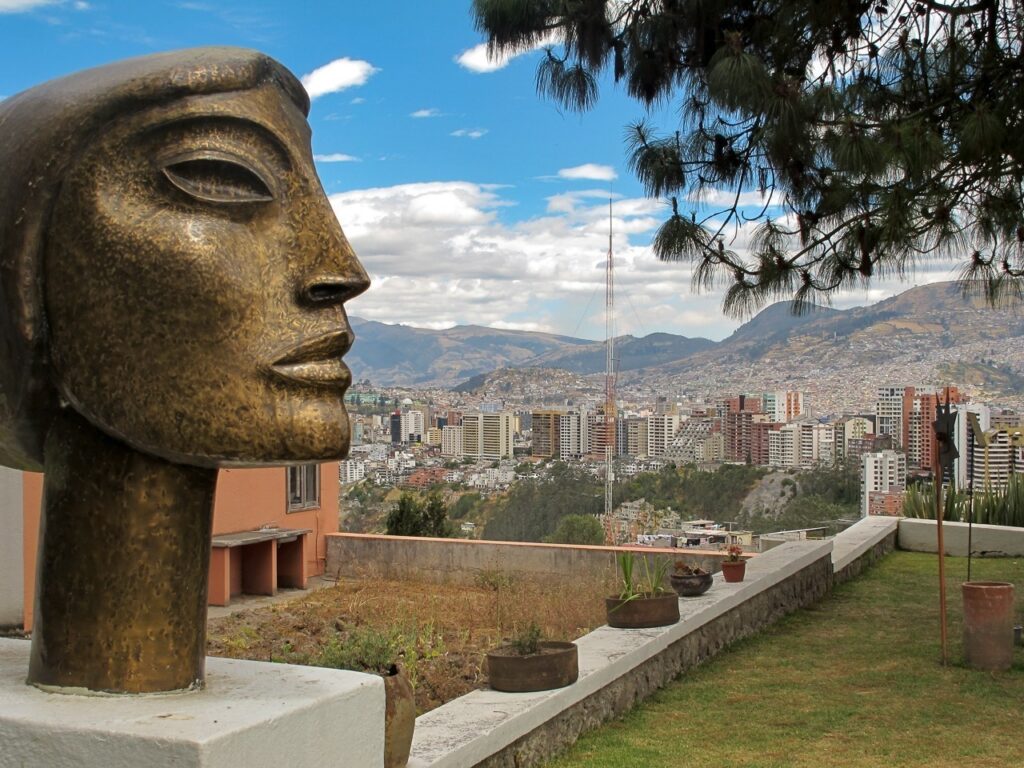
The Capilla del Hombre is a surprising museum with an awesome view.
With a drawing inspired in Paris’ Notre-Dame Cathedral, – including the gargoyles, which in the Ecuadorian version became iguanas and turtles – the imposing Basilica del Voto Nacional was opened in 1874. Admission is free, but if you want to climb the towers you have to pay U$3. On the fourth floor, there’s a very nice cafe to help you digest.
Speaking of sights, this one is a must-see. A sort of Christ the redeemer for Quito, the Virgem del Panecillo is a 42-meter bronze statue that blesses the city from atop a hill. The magnificent view of the city is totally worth it; it takes 10 minutes to get there and a taxi from the city center costs about U$5.
An indispensable tour while in Quito is the Capilla del Hombre, which brings together the main works of Oswaldo Guayasamín (1909-1999), Ecuador’s greatest contemporary artist. Often compared to Pablo Picasso for the potency of his strokes and sculptures, he lived in a small house right next door to there. I fell in love with his work and brought a home poster that lives with us to this day.

At the Intiñan Museum, the challenge is to balance an egg over the Equator.
Visiting the famous Equator Line
The imaginary line that divides the planet into two hemispheres crosses 14 countries, but it is in Ecuador that it gets its name and some mysticism. In the surroundings of Quito, at least three monuments guarantee to be precisely on the line. I recommend two of them.
The most famous landmark (and the one I liked the most) is Ciudad Mitad del Mundo, a theme park located 14 kilometers from the capital. You pay U$ 3 and have fun taking pictures with one foot on either side of the line, watch a few so-so bands, leave the kids on the playgrounds, buy some keepsakes at the souvenir shops, and eat ceviche, a fresh, raw seafood dish originated in neighboring Peru, in one of the not-so-clean restaurants. It looks and feels like a tour for the Ecuadorian people and not the foreigners – which I think is great.
A little more serious and 200 meters to the north, the Museo Intiñan (museointi-nan.com.ec) guarantees to be in fact over the line (location granted by measuring with something called a military GPS). It doesn’t matter where the line is anymore, but Intiñan brings a more scientific approach to explaining the world’s division. You make interactive experiments with a guide and find that the water spins clockwise in the Southern Hemisphere, counterclockwise in the North, and falls vertically when over the line. Oh, and those who can balance an egg on a nail gets a diploma. Of the five in our group, only one managed.

The Imbabura Volcano is one of the most photographed in Ecuador.
Discover the volcanoes and the Otavalo Market, near Quito
Leaving Quito, there are endless attractions to put in your itinerary. You don’t have to be superfit to go face to face with a volcano. To get to the craters, things change a little bit, and a minimum of fitness preparation is recommended for the hike. Also, try not to do this on one of your first days on the altitude, and use the days in Quito as acclimatization.

Flooded crater of the Cotacachi volcano.
The most famous volcano in Ecuador is Cotopaxi (5,897 meters), one of the highest and most active in the world. It’s a two-day hike, with 9 hours of walking each day and an overnight in a refuge at 4,800 meters. But you’ll have reached the summit of the second largest mountain in the country and crossed the 5,000-meter barrier, which is already on the scale of the so-called “high mountain” experiences. Companies like Cumbre Tours offer this operation.
Unfortunately, I didn’t have the chance to go to Cotopaxi and had to settle for the beautiful walk through Cotacaxi, a flooded volcano spread over a huge preservation area full of trails. North of Quito, I recommend a stop at the Panamá hat factory – yes, the best ones are from Ecuador! – from where you could see beautifully the Imbabura Volcano. This is a product worth investing, between U$ 20 and U$ 50, because it lasts a long time.
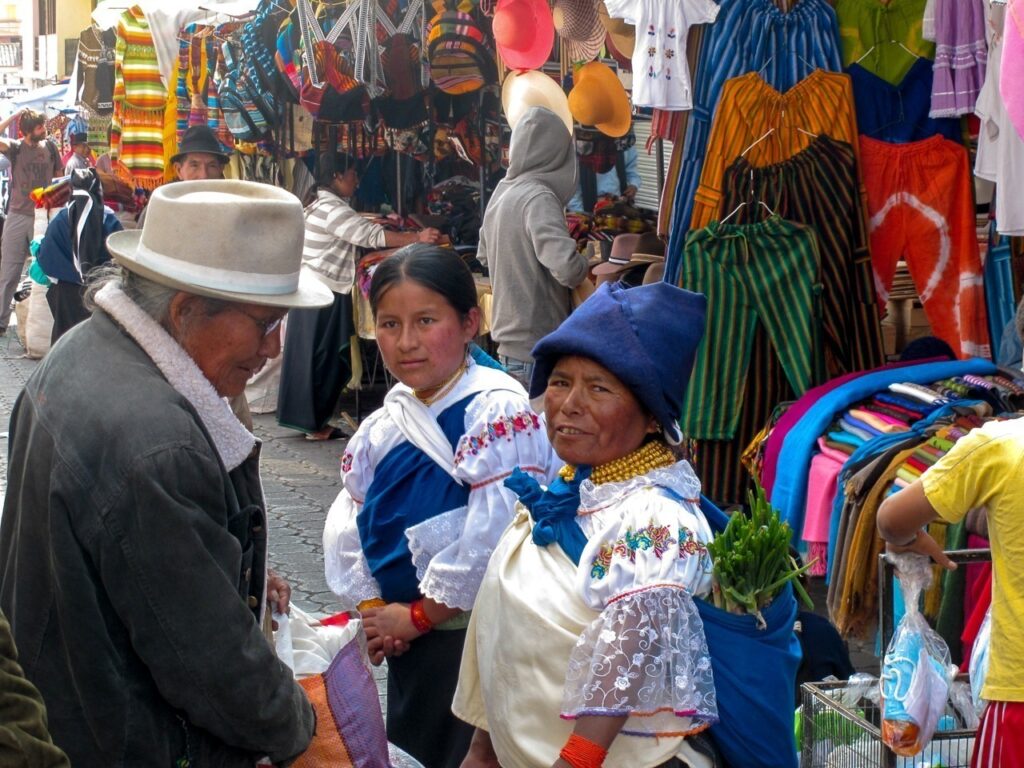
The Otavalo Market is the largest of its kind in the entire Andes.
By the way, a good place to look for your hat is at the Otavalo Market in Imbabura, 90 kilometers from Quito. It’s a beautiful place to spend the day amid what’s most powerful in the Andean culture. Incidentally, this is considered the largest Andean market in the world. It takes place every day of the week, but if you can, go on Saturdays because the experience is so much more intense. There’s everything there, from a large live-animal fair, with pigs, llamas, chickens and cuys, the tasty guinea pigs. But the market goes on for several blocks and sells everything from food to paintings, Andean ingredients to handmade clothes. It’s a beautiful synthesis of Ecuador.
As you can see, this small country on the equator has a lot to offer, and a visit to its capital is full of interesting attractions! Plan your trip, and enjoy!






Deixe seu comentário